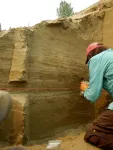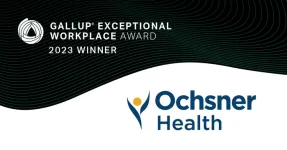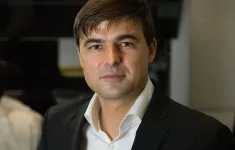(Press-News.org) Scientists often look to the past for clues about how Earth’s landscapes might shift under a changing climate, and for insight into the migrations of human communities through time. A new study offers both by providing, for the first time, a reconstruction of prehistoric temperatures for some of the first known North American settlements.
The study, published in Quaternary Science Reviews, uses new techniques to examine the past climate of Alaska’s Tanana Valley. With a temperature record that reaches back 14,000 years, researchers now have a glimpse into the environment that supported humans living at some of the continent’s oldest archaeological sites, where mammoth bones are preserved alongside evidence of human occupation. Reconstructing the past environment can help scientists understand the importance of the region for human migration into the Americas.
“When you think about what was happening in the Last Glacial Maximum, all these regions on Earth were super cold, with massive ice sheets, but this area was never fully glaciated,” says Jennifer Kielhofer, Ph.D., a paleoclimatologist at DRI and lead author of the study. “We're hypothesizing that if this area was comparatively warm, maybe that would have been an attractive reason to come there and settle.”
Kielhofer conducted the research during her doctoral studies at the University of Arizona, and was attracted to the Alaska location because of the wealth of research expertise being focused on the area. She also saw an opportunity to contribute to scientific understanding of a part of the world that is particularly sensitive to global climate change.
“We have to look to the past to try to better constrain how these areas have responded previously,” she said, “and how they might respond in the future under climate scenarios that we predict.”
Earlier research had relied on coarse temperature records by examining changes in vegetation and pollen. However, this information can only provide a general sense of whether a region was warming or cooling over time. To obtain a more precise history of temperatures, Kielhofer examined soil samples from the archeological sites. Using a technique known as brGDGT paleothermometry, she examined temperature records stored in bacteria to obtain a record of mean annual air temperature above freezing with a precision within about 2.8 degrees Celsius.
“Bacteria are everywhere,” she said. “That's great because in areas where you might not have other means of recording or assessing past temperature, you have bacteria. They can preserve for millions of years, so it's a great opportunity to look at pretty much anywhere on Earth.”
The results were surprising, she said, because many scientists had previously believed that the region experienced large swings in temperature, which may have contributed to the movement of early humans. But Kielhofer’s data showed that temperatures in the Tanana Valley remained fairly stable over time.
“The region wasn't really responding to these global scale climate changes as we might expect,” she said. “Because temperatures are really stable through this record, we can't necessarily use temperature as a way to explain changes in human occupation or adaptation through time, as scientists have previously tried to do.”
Kielhofer’s now turning her attention to other historical records, like changes in aridity, that could help explain how conditions in this region influenced early human communities.
Study authors include: Jennifer Kielhofer (DRI/University of Arizona), Jessica Tierney (Univ. of Arizona), Joshua Reuther (Museum of the North, Univ. of Alaska Fairbanks), Ben Potter and Charles Holmes (Univ. of Alaska Fairbanks), François Lanoë (Univ. of Arizona), Julie Esdale (Colorado State), Matthew Wooller and Nancy Bigelow (Univ. of Alaska Fairbanks).
###
About DRI
The Desert Research Institute (DRI) is a recognized world leader in basic and applied environmental research. Committed to scientific excellence and integrity, DRI faculty, students who work alongside them, and staff have developed scientific knowledge and innovative technologies in research projects around the globe. Since 1959, DRI’s research has advanced scientific knowledge on topics ranging from humans’ impact on the environment to the environment’s impact on humans. DRI’s impactful science and inspiring solutions support Nevada’s diverse economy, provide science-based educational opportunities, and inform policymakers, business leaders, and community members. With campuses in Las Vegas and Reno, DRI serves as the non-profit research arm of the Nevada System of Higher Education. For more information, please visit www.dri.edu.
END
CHAMPAIGN, Ill. — An ancient biological enzyme known as nickel-iron hydrogenase may play a key role in producing hydrogen for a renewables-based energy economy, researchers said. Careful study of the enzyme has led chemists from the University of Illinois Urbana-Champaign to design a synthetic molecule that mimics the hydrogen gas-producing chemical reaction performed by the enzyme.
The researchers reported their findings in the journal Nature Communications.
Currently, industrial hydrogen is usually produced by separating hydrogen gas molecules from oxygen atoms in water using a process called ...
NEW ORLEANS, LOUISIANA— Ochsner Health, Louisiana’s largest nonprofit, academic, multi-specialty, healthcare delivery system, has received the 2023 Gallup Exceptional Workplace Award (GEWA). This award recognizes the most engaged workplace cultures in the world.
After another year of unpredictability in the workplace, Gallup found that Ochsner Health continued to put their employees’ engagement at the center of their business strategy, embedding engagement into their very culture.
“Our employees are the reason for the culture of positive engagement at Ochsner Health. From physicians and providers to clinical ...
LA JOLLA, CALIF. Mar 29, 2023 - Sanford Burnham Prebys researchers have identified a group of proteins that could be the secret to cellular reprogramming, an emerging approach in regenerative medicine in which scientists transform cells to repair damaged or injured body tissues. The researchers were able to reprogram damaged heart cells to repair heart injuries in mice following a heart attack. The findings, which appear in the journal Nature Communications, could one day transform the way we treat a variety of diseases, including cardiovascular disease, Parkinson’s ...
EMBARGOED FOR RELEASE UNTIL 4 P.M. ET, WEDNESDAY, MARCH 29, 2023
MINNEAPOLIS – Both cluster headache and migraine have strong links to the circadian system, the internal clock that regulates body processes, according to a meta-analysis published in the March 29, 2023, online issue of Neurology®, the medical journal of the American Academy of Neurology.
The meta-analysis included all available studies on cluster headache and migraine that included circadian features. This included information on the timing of headaches during ...
Deep brain stimulation (DBS) is a promising therapy for treatment-resistant obsessive-compulsive disorder (OCD). A first-of-its-kind collaborative study led by researchers at Texas Children’s Hospital, Baylor College of Medicine, and Brigham & Women’s Hospital has found that mapping neural connections in the brains of OCD patients offers key insights that explain the observed improvements in their clinical outcomes after DBS. The study was published in Biological Psychiatry.
Neuropsychiatric disorders such as obsessive-compulsive ...
PORTLAND, Oregon -- New research from Oregon Health & Science University and collaborators indicates lab-made antibodies may be able to cure people infected with yellow fever, a virus for which there is no treatment.
The natural immune response to invading pathogens normally involves making protective proteins called antibodies. A study published today in Science Translational Medicine suggests that a single monoclonal antibody infusion can strengthen the body’s fight against yellow fever.
In the study, the yellow fever virus was undetectable in all animals that received monoclonal antibody infusions after being exposed to the virus.
“Two ...
Evermed and the American College of Cardiology (ACC) have announced the launch of ACC Anywhere, a new content hub that provides cardiologists around the world with on-demand access to the latest clinical knowledge. The hub contains original content from five conferences including ACC’s 2022 and 2023 Annual Scientific Session, with additional conferences to be added in the future.
Evermed was selected to collaborate with ACC due to its advanced AI-powered recommender engine and its ability to effectively deliver medical education content 365 days per year. In addition, Evermed’s technology will help drive yearlong engagement to ensure that users are able ...
A recent study from Texas Children’s Hospital and Baylor College of Medicine has expanded the clinical spectrum of a new epileptic disorder called Intellectual Developmental Disorder with Macrocephaly, Seizures, and Speech Delay (IDDMSSD) with the identification of the first recurrently affected residue identified in the protein kinase domain of PAK1 protein. The study, published in the American Journal of Medical Genetics: Part A, found potential correlations between how and which organ ...
“In the present study, we found that downregulation of angulin-1/LSR induced malignancy via upregulation of EGF-dependent CLDN-2 and TGF-β-dependent cell metabolism in human lung adenocarcinoma.”
BUFFALO, NY- March 29, 2023 – A new research paper was published in Oncotarget's Volume 14 on March 24, 2023, entitled, “Downregulation of angulin-1/LSR induces malignancy via upregulation of EGF-dependent claudin-2 and TGF-β-dependent cell metabolism in human lung adenocarcinoma A549 cells.”
Abnormal expression of bicellular tight junction claudins, including ...
Nearly one in five American adults has diabetes. But that doesn’t mean the common condition is simple to treat or manage. Diabetes and its complications are the No. 1 cause of kidney failure, adult blindness, and lower-limb amputations. It’s also the seventh-leading cause of death in the U.S. As with so many chronic conditions, diabetes also disproportionately affects the most vulnerable in our communities, further exacerbating existing health disparities.
In a new supplemental issue of the ...




